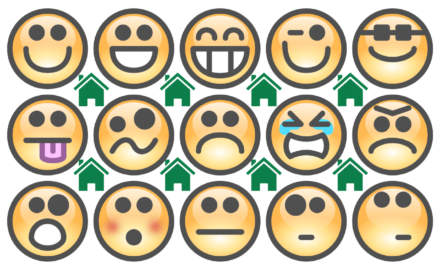In this post, we will explore the ongoing debate about return-to-office mandates. But first, our disclosure:
Disclosure: This post may contain affiliate links, meaning we earn a commission on purchases made through those links at no extra cost to you. As an Amazon Associate, I earn from qualifying purchases.
Disclaimer: The content on this site is for informational and educational purposes only and does not constitute financial, investment, legal, tax, or any other professional advice and should not be used as a substitute for professional advice. For more details, read our full Disclaimer.
COVID Kicks Off The Return-To-Office Battle
Before COVID, there were few options for remote work. It did not matter if you were a truck driver or worked in accounts payable at the corporate headquarters. If you wanted a job, you had to show up in person every day. Tough luck if your car breaks down. You had to use paid time off or not get paid. Then COVID came along and changed everything.
The COVID-19 pandemic forced leaders of many businesses to allow employees to work from home to keep business operations going. But make no mistake—they were not happy about this choice. Deep down inside, CEOs hated it.
CEOs like Jamie Dimon of JP Morgan Chase have railed against remote work, claiming it decreases collaboration and productivity. In a now-famous leaked audio of Jamie Dimon, he rants against remote work, stating, “And I’ve had it with this stuff. And you know, I come in, you know, I’ve been working seven days a godd*mn week since Covid. And I come in, and where’s everybody else?”
Others, like Amazon’s CEO, Andy Jassy, have issued a return-to-office mandate to “better set up to invent, collaborate and be connected enough to each other and our culture to deliver the absolute best for customers and the business.”
Based on Jamie Dimon and Andy Jassy’s comments, you might think only C-suite executives despise remote work, but you would be wrong. Many other workers who do not have the option, like the cashier at your grocery store or the plumber coming to your home to fix a leaking pipe, also resent it. It has become another front in the white-collar versus blue-collar wars.
White Versus Blue Collar War
White-collar jobs refer to professional jobs that typically take place in an office. They are computer-focused and often involve managerial or administrative tasks. Some examples of white-collar jobs include CEOs, accountants, finance professionals, and computer scientists. Blue-collar jobs refer to manual jobs, like factory and construction workers, cashiers at retail stores, and landscapers.
As you can imagine, a person who works behind a computer all day can pretty much work from anywhere with an internet connection. Someone who works in retail is not so lucky. They have to be present in person.
During the pandemic, blue-collar workers risked infection by showing up in person, or they weren’t getting paid. Plus, many were getting paid much less on average than the white-collar employees working from home.
To make matters worse, blue-collar workers had to pay for fuel for their car to show up in person, while software engineers making six figures got to work from the comfort of their homes. Factory workers still had to show up while the design engineers worked in their pajamas.
This situation has led to a strange marriage between CEOs and blue-collar workers who find themselves on the same side. Who would have imagined that a factory worker and Jamie Dimon, the billionaire CEO of the largest bank in America, could agree on anything? The backlash over remote work makes strange bedfellows!
Return-To-Office War, Who’s Right?
Having over thirty years of experience in blue-collar and white-collar jobs, I hope to offer a unique perspective on the return-to-office debate.
As a teenager and throughout college, I held many jobs, including cashier, painter, and factory worker. After graduating college, half of my professional career was spent in the field, on-call 24 hours a day, ready to respond to the next environmental disaster.
Eventually, I moved from the field into the corporate office, where I settled into the finance side of the business. That was where I was when the COVID-19 pandemic hit. I was one of those white-collar workers who shifted from the office to 100% remote work. At the time, it was a completely new experience for me. Since then, I have been allowed to keep a hybrid schedule, which may be the ultimate solution in the return-to-office battle.
With that background and the battle lines drawn, the question is, who is right? Is remote work the ruin of corporations and the bain of society? Or is it the work-life balance that so many desire and a solution to workplace burnout that diminishes productivity? Are CEOs justified in issuing return-to-office mandates, or are workers justified in protesting against them?
Let’s examine the arguments from both sides of the debate. Along the way, we will assign the winner and loser for each argument to help us determine the winner (Hint: Beauty is in the eye of the beholder.) We will begin by addressing the primary concern that CEOs have regarding remote work: collaboration.
Collaboration
As someone who manages people onshore and offshore, I can attest to the benefits of in-person collaboration. Having employees together in the same office can lead to more efficient problem-solving and impromptu brainstorming sessions. It also makes it much easier to walk over to someone else’s desk in another department to resolve an issue. You can’t get that same level of collaboration through remote work.
While collaboration still occurs in remote work settings, it is more challenging. Interactions are less spontaneous and much more structured. Remote work relies heavily on phone calls, chats, and video meetings. As a result, it’s common for too many people to be invited to meetings they don’t need to attend, which is a waste of their time and energy. However, there is one big advantage of remote work over the return-to-office crowd: filtering.
When you are in the office, there is nothing stopping someone from showing up at your desk. Oftentimes, this leads to people asking you questions they could have answered themselves with a little due diligence. The result is you waste time researching an issue you didn’t need to. That said, I think there is a clear winner in the collaboration category.
WINNER: RETURN-TO-OFFICE
Career Growth
When it comes to getting the coveted promotion, it is often more important to be seen than heard. As the saying goes, “Out of sight, out of mind.” Think about it this way: If a manager has to choose between two employees with similar skill sets for a promotion, who will they likely select? It will likely be the employee who is present in the office every day rather than the one who works remotely full-time.
It is also more important when starting your career or a new job. Being seen in the office goes a long way toward getting the next promotion or bigger raise. Attending meetings in person, rather than joining meetings via Zoom, can enhance your chances of advancing your career. It might give you the edge you need when an opportunity arises.
Returning to the office can also help if you struggle with your role or assignments. It can be a good choice if you find it difficult to focus when working from home.
However, being seen may not matter as much if you are a well-established employee. You might reach a stage in your career where you no longer desire advancement, especially if the next steps involve positions that do not interest you.
You may also reach a point where your performance speaks for itself, making it less important to return to the office. At that point in your career, work-life balance may be more important. The flexibility of remote work might outweigh the benefits of career growth. But remember, there is always a risk with this approach. If a company needs to reduce headcount, they may elect to start with remote workers first, regardless of the length of service or your stellar performance. So, be careful!
WINNER: RETURN-TO-OFFICE
Work-Life Balance
One of the biggest advantages of remote work is the ability to attain a healthy work-life balance. For many employees, the flexibility of remote work far outweighs the benefits of returning to the office. Gone is the time spent getting ready for work and commuting to the office only to get stuck in traffic. The benefits of remote work might be greater for employees with kids, especially in today’s world, where both parents often need to work to make ends meet.
If you have kids, you know how busy your life becomes running them from one activity to another. Of course, many of their activities will start right after work, or they will have some school event in the middle of the day. With remote jobs, you can still work a long day without missing out on your kids’ activities.
If your kids have soccer practice at 5:30 p.m., you can work up to when you need to leave. You don’t need to leave work early to get them to take them to practice. If your kids have a midday event at school, you can do it on your lunch break without skipping a beat at work.
The same applies if you don’t have kids. You can work until 5:15 p.m. before heading to your 5:30 p.m. yoga class. You can walk your dog or throw in a load of laundry during your lunch break. It is hard to argue that return-to-office mandates offer the same flexibility and work-life balance.
WINNER: REMOTE WORK
Productivity
This is where things get heated. Return-to-office advocates will argue that remote work reduces productivity. They claim that the work-life balance cherished by remote workers stems from working fewer hours. In other words, they think remote workers are generally less productive and lazy. They tend to believe remote workers are too busy doing their laundry instead of doing actual work.
As someone who works a hybrid schedule and manages others who range from in-person to full-time remote, I can tell you the answer is not so simple. Much depends on the individual, and for many people, working from home can be more productive than being in an office setting.
From my experience, if employees are highly productive in the office, they will be highly productive when working from home. Most highly productive people are hardwired to produce and constantly try to be more efficient. They feed off of their output. Working from home allows them to squeeze more hours out of the workday without the added distractions that come with working in the office.
In contrast, some employees easily become distracted in the office. They often leave their desks more frequently and can easily spend an hour discussing their weekend plans before taking an hour-long lunch break. For these individuals, remote work can be a disaster. When working from home, they may seek out distractions that detract from their productivity.
I tend to be more productive at home. I know this because of software that tracks my productive computer time down to 0.01 minutes. Without worrying about a commute, I log in earlier, eat in front of my computer, and get up a lot less. Is it healthy? We will get to that next.
WINNER: TOSS-UP – DEPENDS ON INDIVIDUAL
Mental Health
Working from home can help create a better balance between work and personal life, which may improve mental health for many individuals. Without the stress of commuting and traffic, you can dedicate more time to the things you enjoy outside of work. If you work in a high-stress office environment, working from home can provide a separation that reduces anxiety and stress. Plus, if you have a family, you no longer have to worry about leaving the office on time to ensure your kids are fed and ready for their 6:00 p.m. soccer practice.
However, it is not all unicorns and sunshine. Working remotely full-time may not benefit everyone’s mental health. At times, it can feel lonely and isolating. As such, a lot depends on the person and their situation.
When a person’s home becomes where they eat, sleep, live, and work, it can be mentally draining and isolating. The boundaries between personal and professional life often blur under one roof, making it challenging to separate the two. Having a designated workspace away from home helps establish a clear boundary between professional responsibilities and personal life. This separation can lead to improved focus during work hours and a greater sense of relaxation at home.
Working in an office can build personal connections. Being physically present with colleagues can help establish strong relationships and a sense of belonging. Shared experiences, such as team lunches or coffee breaks, play a vital role in building camaraderie and fostering a sense of belonging. These interactions promote teamwork and create a supportive environment where individuals feel valued and connected to one another, which may improve mental health.
The key takeaway is that whether remote or office work is better for one’s mental health depends on the individual.
WINNER: TOSS-UP – DEPENDS ON INDIVIDUAL
Physical Health
Much like mental health, physical health varies from person to person. For some people, remote work becomes a key to maintaining their fitness. They might discover they are more active throughout the day and find it easier to attend a local gym for a 5:30 p.m. Zumba class. Instead of opting for takeout at lunchtime, they can prepare a healthy meal at home. However, others will find the opposite true, and I am one of those people.
I have found that when I work from home, I take fewer breaks and sit more than when I am in the office. I eat less healthy, snacking off and on all day while barely getting up from my desk.
On the days I go to work, I pack a healthy lunch, and I make sure to get in my morning run before heading to the office. I also get out for a 20-minute walk during lunch. Better still, I have a standing desk, so when I get tired of sitting, I can raise the desk and stretch my legs without decreasing my productivity.
As a result, on the days I go into the office, I take 10,000 steps or more and eat healthier. In contrast, on the days I work from home, I tend to take less than 10,000 steps and eat more junk food. Again, others might find the opposite to be true. Much like personal finance, It all comes down to the individual.
WINNER: TOSS-UP – DEPENDS ON INDIVIDUAL
Saving Money
Remote work has the edge in this category over return-to-office mandates. It can help you save significant money in two of the largest money categories outside of housing: transportation and food. With fewer miles driven, you’ll reduce fuel consumption and maintenance costs for your vehicle. Fewer miles driving means your tires and brakes will last longer, and you’ll spend less at the gas pump. If you use public transportation to commute, you’ll no longer need to purchase train, bus, or ferry tickets.
As for food, say goodbye to the expense of eating lunch out every day. You can now make your lunch at home without worrying about preparing it beforehand. You’ll no longer find the need to stop at a coffee shop on your way to work, as making coffee at home becomes your new routine. Just be cautious not to replace your lunch outings with daily DoorDash orders, as this could cost you more than dining out at the office did.
However, you must be mindful of the “hidden” costs of your physical and mental health. For some individuals, the isolation that comes with working from home can result in feelings of loneliness, stress, and anxiety, which may affect overall mental health. Furthermore, the lack of a structured routine can lead to sedentary behavior and neglect of physical exercise. As a result, for some, the savings on transportation and food will not outweigh the costs to their mental and physical well-being.
WINNER: REMOTE WORK (BUT BE MINDFUL OF PHYSICAL AND MENTAL HEALTH)
Return-To-Office Alternative: Hybrid Schedule
In my opinion, the answer to the return-to-office debate is the hybrid schedule. It offers the best of both worlds while limiting the impact of the worst parts of both worlds. I have worked in a hybrid schedule since the pandemic and love its flexibility. It allows me to work from home while still getting into the office regularly, helping to limit burnout with one schedule or the other.
A hybrid schedule allows you to collaborate with others in person while allowing you to stay home on days when you need to focus, avoiding distractions like casual office conversations. You’ll continue to experience cost savings while establishing a schedule prioritizing your mental and physical health. It helps you avoid falling into a rut with one routine or the other.
As the saying goes, “Variety is the spice of life.” I believe a hybrid schedule is the spice and answer to the great return-to-office debate.
Conclusion: Who Is Right In The Return-To-Office Battle?
The battle lines have been drawn between CEOs and employees. One side demands workers return to the office, while the other demands they continue working from home. Each has pros and cons, and the question is, who is right?
Tallying up the winners of each category, we find the following:
- RETURN-TO-OFFICE: WINNER: Collaboration, Career Growth
- REMOTE WORK: WINNER: Work-Life Balance, Saving Money
- TOSS-UP: Productivity, Mental Health, Physical Health
As you can see from the results, there is no clear winner. It all comes down to the individual. You might review the results and create an entirely different list of winners or categories. Since no two people are the same, I believe a hybrid schedule is the best option. It offers flexibility and allows employees to choose their schedules that meet their needs while providing regular opportunities for in-person office work.
Unfortunately, employees may not have much choice in the matter. If CEOs and bosses give the ultimatum of either showing up or being fired, there is not much one can do. However, I believe it would be wise for them to offer some flexibility. Offering employees flexibility with their work schedules can help retain talent and provide a positive work environment, leading to a more empowered and productive workforce. And isn’t this what everyone wants?
















